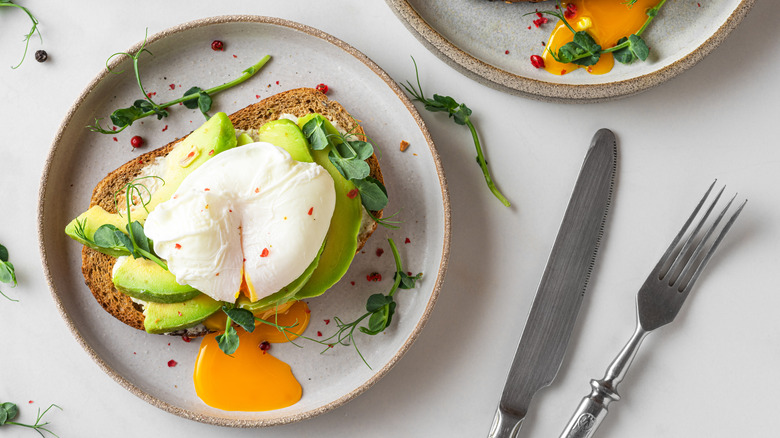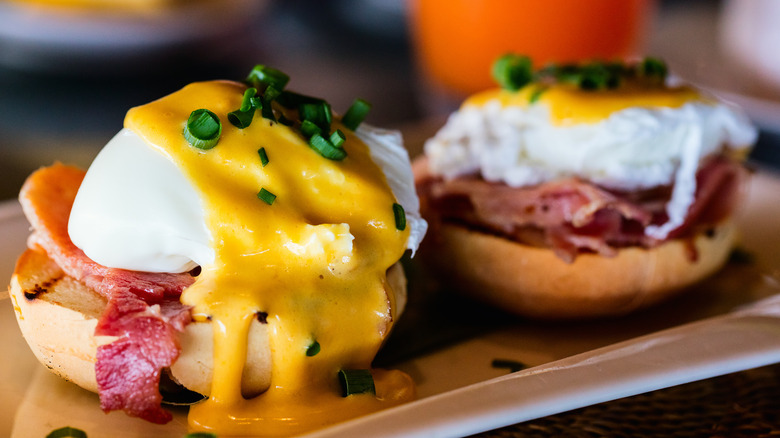The Reason You Shouldn't Crack Eggs Directly Into Water When Poaching
Brunch done right should feel like a decadent experience, and there are few things more decadent at any table than a perfectly poached egg. Slicing through that pillowy shell and watching a liquid gold yolk spill over the plate feels like a treat reserved for royalty. But it doesn't have to be. Poaching an egg at home can be intimidating, but once mastered it opens the door to the beautiful taste of Eggs Benedict, hashes, and simply topping everything with a poached egg. You can also practice some variations like sous vide, poaching in olive oil, or poaching in wine.
One of the most difficult parts of poaching an egg is keeping the white intact while cooking. Doing so incorrectly can lead to wispy trails of egg whites swirling around the pot like a ghost taking a bath. The reason for this, according to NPR, is that there are two layers to an egg white. These layers are each referred to as albumen. There is the thicker albumen that protects the yolk itself, and its thinner counterpart that makes up the outer edges of the egg. This thinner, outer layer is the one that gives most home chefs trouble. The thinner albumen is more watery and therefore has a harder time staying cohesive as it cooks. Older eggs also have a higher amount of the thinner albumen, which means older eggs are even harder to get right.
Eggs cracked into a bowl are easier to control
According to MyRecipes, cracking an egg into a small bowl before placing it in the water helps the egg stay in one cohesive piece. When an egg goes directly from shell into water, there's a chance the yolk will drop down to the bottom of the water quickly, which will leave the outer albumen behind as it starts to cook.
For perfectly poached eggs, MyRecipes recommends bringing the water to a boil, and then lowering it down to a simmer. Then stir the water to get a whirlpool effect going before gently pouring the egg from the bowl into the center of the whirlpool. If done correctly, the egg should float in the middle of the swirling whirlpool and cook for about two minutes depending on how you like your yolk.
There are also a few more tricks that can help if the whites are still separating. As mentioned earlier, older eggs are more likely to separate because they tend to have large outer albumen that is more likely to cause wispy strands to form (via NPR). Bon Appétit recommends adding roughly a quarter cup of vinegar to the water to help the eggs set better. Practice makes perfect of course, and getting some of the finer points of finding the right heat, nailing the swirl, and gracefully dropping your egg might just take a few tries.

